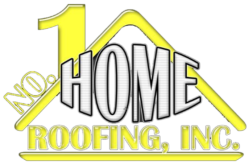“If you’ve got an unfinished attic, giving it proper insulation is one of the simplest ways to keep a lid on your heating bill this season. The Department of Energy estimates that a properly insulated attic can shave 10 to 50 percent off your heating bill. And it works the opposite way for warm climates; in summer, it helps stabilize your house’s indoor temps to keep cooling needs in check”, explains This Old House.
One of the easiest places to add insulation to improve the comfort and energy efficiency of your home is in the attic. Many homeowners ask “which is better, blown-in or batt insulation”. There are several factors that will point you to the correct answer and here is some information to help you decide on what type of insulation is best for your home.
Fiberglass Insulation
Fiberglass is a man-made material used in construction as insulation and soundproofing. It is made with melted glass spun out into very thin fibers. The microscopic glass fibers are captured then either left loose or pressed into a layered matrix for batts and rolls.
Cellulose Insulation
The oldest form of home insulation is cellulose insulation. It can be either a loose-fill or blown-in insulation and can be used in both new and existing homes. Existing walls, open new walls, and unfinished attic floors are the normal places to put cellulose insulation. It is made from recycled newsprint. These small particles form an insulation material that conforms to most spaces without disturbing the structure or finish.
Blown-In Insulation
A common way to insulate your attic, crawl space or walls of your home is blown-in insulation. It can be done by a roofing professional or homeowner. Most home improvement stores can supply rental blower units, but many homeowners find the option of a hired installer easier due to the large size of the job. Blown-in insulation increases the comfort of your home by neutralizing humidity and drafts and usually brings the largest return on investment.
You can expect an R-value of 2.2 to 2.7 per inch for fiberglass and between 3.2 and 3.8 per inch of cellulose.
Blown-in provides a seamless blanket over the boards of your attic. There’s no way for air to get through it. It’s also faster to install than batt or rolled insulation and costs less to install overall. One of the best advantages to installing this material is that it’s considered renewable. Other advantages to this material include:
- Vapor retarder and moisture barrier. Blown-in insulation that is installed correctly can reduce moisture infiltration. Maintaining the R-value keeps the house as warm as possible in the winter and cool in the summer. Adding an attic fan also helps to mitigate moisture that may infiltrate a vapor retarder near the insulation.
- Added longevity for the roof and shingles. A well-ventilated roof that includes an adequate layer of blown insulation can create a conditioned space in the attic. This conditioned space reduces the strain of heat on the sheathing that causes shingles to fail earlier.
- Decrease in energy bills. Blown-in insulation can fill the crevices and cavities of attic space in ways that batting cannot. This creates a tight fit for little air gaps in the roof and eaves of the home, which saves a great deal of money by reducing the energy an air conditioner or furnace has to expend to heat or cool the home.
Batt insulation
“Batt and Roll” or “Blanket” insulation is the most common form of home insulation. It is stored in rolls and is generally made of fiberglass. It is the least expensive way to insulate a home.
Batt insulation is precut sections of fiberglass or rock wool insulation. Designed for easy handling and use between framing, such as studs and joists. It is available either with or without paper or aluminum foil facing and can be used in floors, walls, attics and ceilings.
The R-factor is not the same when comparing fiberglass batts to blown-in fiberglass. Batts offer a slight advantage. You can usually obtain an R-factor of 3.1 to 4.2 or slightly higher per inch of material with batts. The R-factor of blown-in fiberglass is usually 2.3 to 2.8 per inch of material.
R Value
An “R” value is the level of heat flow resistance provided by the insulation material. The higher the “R” value the greater the insulation performance.
Before the government set standards and recommendations, some contractors insulated with just a few inches of material. Today, the U.S. Department of Energy recommends certain levels of insulating material based on the area of the country in which you live. If your home heats up too fast once the sun comes out, then that’s a clear sign you need more layers of insulation. You can request that an HVAC professional measure the R-value of your current material which is the ability of the material to resist heat.
An “R” 60 value is the recommended level of insulation for maximum energy efficiency in most attics.
If you have any questions or need help with your insulation, No. 1 Home Roofing is ready to evaluate and fix any problems.
No. 1 Home Roofing is a family owned and operated roofing company conveniently located on US Highway 19 in Palm Harbor, Florida. We are dedicated to providing top quality workmanship and materials to ensure that your new roof is done right. We specialize in shingle, tile, and flat roof installation, repairs, and maintenance. Contact us for an appointment and/or estimate at 727-781-7663.
